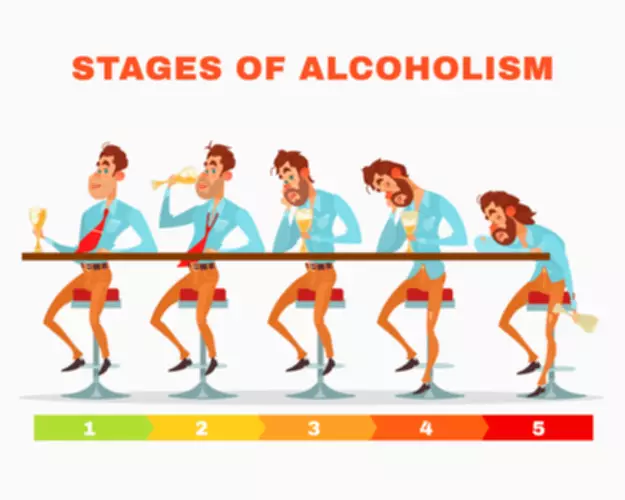
While the exact treatment modality may vary depending on the type of dependence, understanding the difference between physical and psychological dependence is crucial for effective management. Psychological dependence is tied to the mental and emotional aspects of substance use. physiological dependence on alcohol This form of dependence is characterized by behaviors like the inability to stop using drugs, using substances to cope with life’s challenges, an obsession with the substance, taking larger doses over time, and experiencing social symptoms like legal and financial issues.
Adults: prevalence of disorder by substance, age of onset of SUD
C) Wistar rat before (left) and after (right) acute binge alcohol gavage for 4 days. Note the ventricular and pericollicular expansion of cerebrospinal fluid (CSF) (red arrows). D) The same animal after 1 week recovery (right), showing return to pre-exposure CSF-filled spaces. In summary, the technology for neurobiological studies was remarkably primitive in 1970, and few laboratories were applying even these limited approaches to understanding neuronal actions of ethanol.
Seek The Joy Of A Sober Life
- The more an individual indulges in heavy drinking, the greater the risk of encountering severe health complications.
- In some cases, dual diagnosis treatment may be necessary for individuals who have co-occurring mental health disorders alongside their addiction.
- The road to recovery from alcoholism requires addressing both its physical and psychological dimensions.
- It is often helpful to inquire whether the patient prefers “uppers” (stimulants) or “downers” (sedatives).
- Cognitive-behavioral therapy, in particular, has been found to be effective in helping individuals identify and change problematic behaviors related to substance use.
DIF indicates if criteria show differential endorsement probabilities by demographic or other characteristics, conditional on underlying trait severity. IRT analysis was the principal method used by the DSM-5 SUD workgroup to examine the relationship of abuse to dependence criteria (Hasin et al., 2013b); this literature now numbers over 50 publications. Both physical dependence and psychological addiction can result in withdrawal symptoms if you suddenly quit. If you recognise any of these signs in yourself or others, it’s important you seek professional help.
Hallucinogen, inhalant withdrawal

An outcome of this series of pathological studies was the development the New South Wales Tissue Resource Centre (Sheedy et al. 2008) at the University of Sydney, Australia, funded in part by the NIAAA. More than 2,000 cases of alcoholism and other neuropsychiatric conditions and controls are being obtained prospectively, with extensive antemortem characterization. Postmortem brains undergo standardized preservation procedures, enabling studies, for example, of neurochemical and genetic markers of alcoholism, by researchers throughout the world.
- More detailed quantitative assessment of gait and balance using walk-a-line testing or force platform technology, however, has revealed an enduring instability in alcoholic men and women even after prolonged abstinence.
- Definitions of tolerance and withdrawal were taken largely from expert review papers (Gilpin and Koob, 2008, Koob, 2006, Koob and Volkow, 2010, Koob, 2014).
- These include mouth, throat, and breast cancers, other severe illnesses like bowel, breast, and pancreatic cancers, and problems like high blood pressure, stroke, and coronary alcohol-related heart disease.
- Being dependent on alcohol is likely to increase your risk of developing several major health issues as a result of alcohol consumption.
- In conclusion, understanding the distinction between physical and psychological dependence is crucial in addressing substance abuse.
These two aspects of addiction have distinct characteristics and impacts on behavior and the body. Tolerance refers to the body’s adaptation to the presence of a substance, requiring larger amounts to achieve the desired effect. Withdrawal occurs when the substance is abruptly reduced or discontinued, resulting in a range of physical and physiological symptoms. Mid-Stage – Mid-stage alcohol dependence is marked by a loss of control over both cravings for alcohol and drinking habits.
How can I tell if I’m dependent on alcohol?
In addition to these physical symptoms, symptoms of physical dependence can include fear, anxiety, and discomfort during withdrawal, which may lead to lashing out at loved ones. Without supervised detox, there are significant risks, including death, depending on factors such as the duration and amount of substance use. On the other hand, psychological dependence is tied more to the emotional and mental aspects of substance use. This is often characterized by behaviors like the inability to stop using the substance, using the substance to cope with life’s challenges, obsession with the substance, and experiencing social issues such as legal and financial problems as a result of substance use [2].

Drugs & Supplements
- In conclusion, physical and psychological dependence are two distinct types of addiction.
- That cueing can enhance remembering of new explicitly learned information by KS patients suggested that retrieval processes are more affected than encoding or consolidation processes.
- Lastly, you may start to develop a tolerance for alcohol but may not notice it yet.
There are various medications that can help you to withdraw safely while your central nervous system tries to rebalance. A clinical detox is typically carried out on a residential rehab programme where you’ll also receive appropriate nutritional support and round the clock supervision. Whether you struggle with physical or psychological addiction or both, we help you learn the tools you need to overcome at Gateway. At-Risk Stage – Known as the pre-alcoholic stage, this is when you choose to drink socially or at home.
- If you’re seeking guidance on alcohol addiction, look no further than AlcoholAwareness.org.
- Ethanol, which we commonly refer to as alcohol, is in a class of psychoactive drugs known as depressants (Figure 4.15).
- Advancement of this knowledge has been underwritten by 40 years of intramural and extramural funding by the National Institute on Alcohol Abuse and Alcoholism (NIAAA).
- But, a physical dependence can be thought of as the signs and symptoms a person displays that are tangible.
- Withdrawal syndromes can last from days to months, with protracted withdrawal syndrome potentially lasting for months, years, or indefinitely.
- Heavy drinking over a period of years can damage the liver, causing inflammations such as steatosis (fatty liver) alcoholic hepatitis, and fibrosis.
Methadone clinics help people who previously struggled with opioid addiction manage withdrawal symptoms through the use of methadone. Other drugs, including the opioid buprenorphine, have also been used to alleviate symptoms of opiate withdrawal. In reality, they are not the same, but share some commonalities and are often linked.

Physical vs Psychological Alcohol Addiction
Craving paradigms use alcohol beverage stimuli (e.g., a chilled glass of foaming beer) to examine differences between alcoholics and control subjects in brain activation in response to alcohol-relevant stimuli (Myrick et al. 2004; Tapert et al. 2003). These studies have resulted in the identification of alcohol reward brain systems (Makris et al. 2008) (see figure 6). Brain regions commonly invoked in rewarding conditions are the nucleus accumbens and ventral tegmental area. As a point of translation, these brain regions identified in humans also are implicated in animal models of alcohol dependence and craving (Koob 2009).